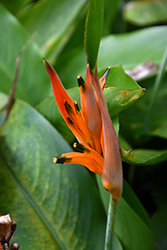Fri & Sat 8am - 8pm
Sun 8am - 7pm
Anytown, USA 12345
fax: 261.787.0463
e-mail: info@successgc.com


Plant Finder

Height: 5 feet
Spread: 30 inches
Sunlight:
![]()
![]()
Other Names: Parrot's Flower, Parakeet Flower
Description:
A beautiful, unusual accent plant, ideal for indoor containers and patios; featuring large, sea-green oblong leaves that give backing to stunning blooms with slender scarlet bracts and golden-yellow flowers; a stunning addition to create a tropical feel
Features & Attributes
Parrot Heliconia features showy spikes of yellow flowers with orange overtones and scarlet bracts rising above the foliage from early winter to late fall. The flowers are excellent for cutting. Its attractive large oval leaves remain bluish-green in color with hints of blue throughout the year.
This is an herbaceous evergreen houseplant with an upright spreading habit of growth. Its wonderfully bold, coarse texture is quite ornamental and should be used to full effect. This plant should not require much pruning, except when necessary to keep it looking its best.
Planting & Growing
When grown indoors, Parrot Heliconia can be expected to grow to be about 4 feet tall at maturity, with a spread of 30 inches. It grows at a slow rate, and under ideal conditions can be expected to live for approximately 10 years. This houseplant will do well in a location that gets either direct or indirect sunlight, although it will usually require a more brightly-lit environment than what artificial indoor lighting alone can provide. It does best in average to evenly moist soil, but will not tolerate standing water. The surface of the soil shouldn't be allowed to dry out completely, and so you should expect to water this plant once and possibly even twice each week. Be aware that your particular watering schedule may vary depending on its location in the room, the pot size, plant size and other conditions; if in doubt, ask one of our experts in the store for advice. It will benefit from a regular feeding with a general-purpose fertilizer with every second or third watering. It is not particular as to soil type or pH; an average potting soil should work just fine.
There are many factors that will affect the ultimate height, spread and overall performance of a plant when grown indoors; among them, the size of the pot it's growing in, the amount of light it receives, watering frequency, the pruning regimen and repotting schedule. Use the information described here as a guideline only; individual performance can and will vary. Please contact the store to speak with one of our experts if you are interested in further details concerning recommendations on pot size, watering, pruning, repotting, etc.
-- THIS IS A HOUSEPLANT AND IS NOT MEANT TO SURVIVE THE WINTER OUTDOORS IN OUR CLIMATE --
